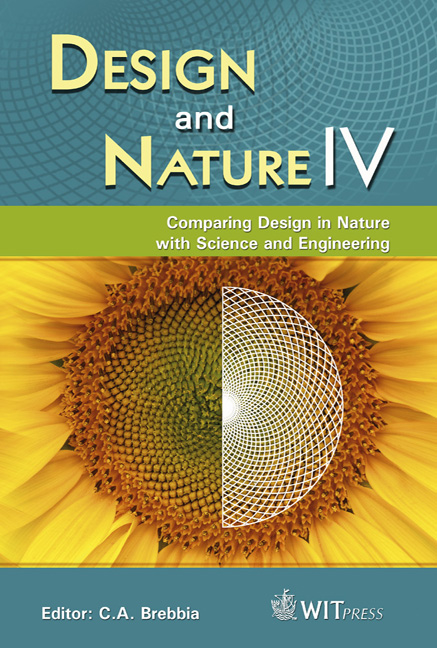Meaning Of The 45°-angle In Mechanical Design According To Nature
Price
Free (open access)
Transaction
Volume
114
Pages
8
Page Range
139 - 146
Published
2008
Size
2,599 kb
Paper DOI
10.2495/DN080151
Copyright
WIT Press
Author(s)
C. Mattheck, R. Kappel & O. Kraft
Abstract
In nature, evolution forces plants and animals to most efficiently use energy and material. Their mechanical load carrying capability depends on material properties, on the shape and constructive setup as well as on the failure mechanism of the complete structure. The mechanical frames of biological structures typically consist of fibrous composite where the fibres often can be interpreted as tension ropes. Tension-loaded components are highly qualified, especially for materialefficient and lightweight structures. The advantage of tension-loaded components is that they cannot fail by kinking or buckling if their aspect ratio is too high, unlike pressure-loaded components. However, plants and animals do not only resist pure tension loads but also compression, and shear loads are often absorbed by a tricky design of shape and material. The present paper will analyze various natural structures and explain their design principle. It will present design rules of nature using the 45°-angle based on the \“Shear-Square” and the \“Method of Tension Triangles”. By use of these methods ultra light and durable technical components can also be designed according to nature without the use of the Finite Element method. Keywords: Thinking in Ropes, Shear-Square, Method of Tensile Triangles lightweight design, biological design, optimization of components. 1 Introduction In nature, one of the features evolution performs most efficiently is creating lightweight designs by adaptation. The saving of weight realizes the economization of finite resources such as material and energy as a benefit for survival.
Keywords
Thinking in Ropes, Shear-Square, Method of Tensile Triangles lightweight design, biological design, optimization of components.





